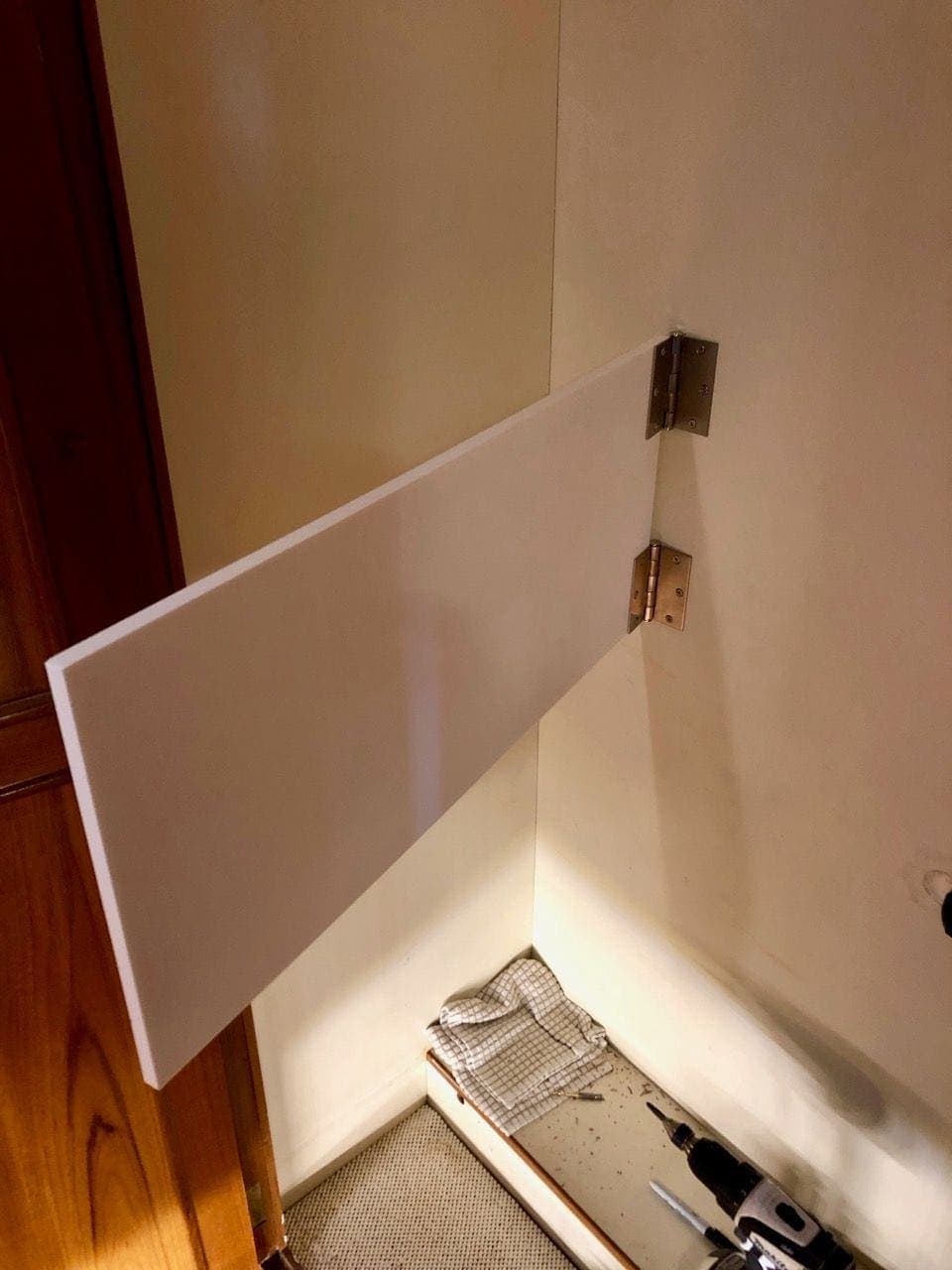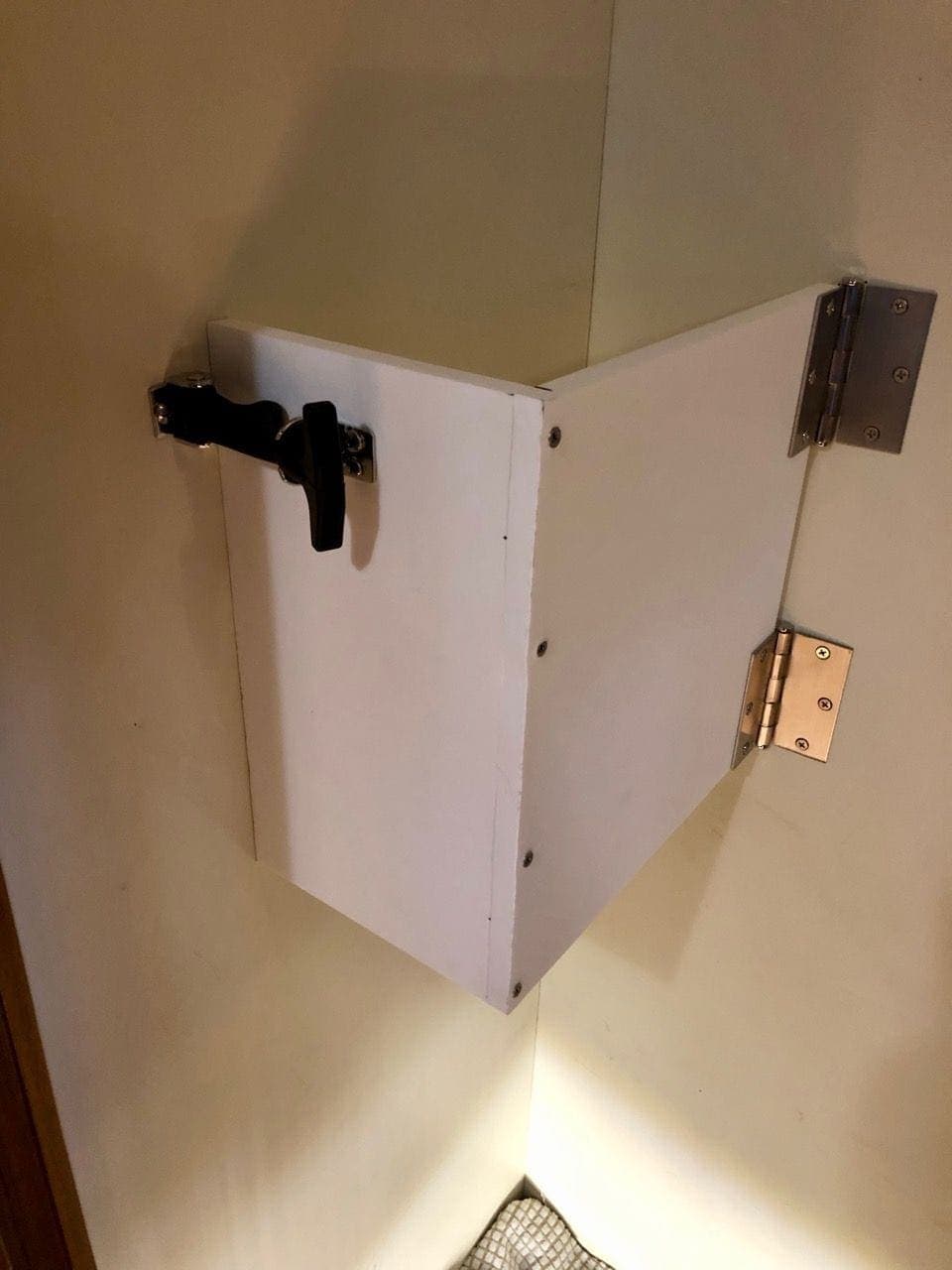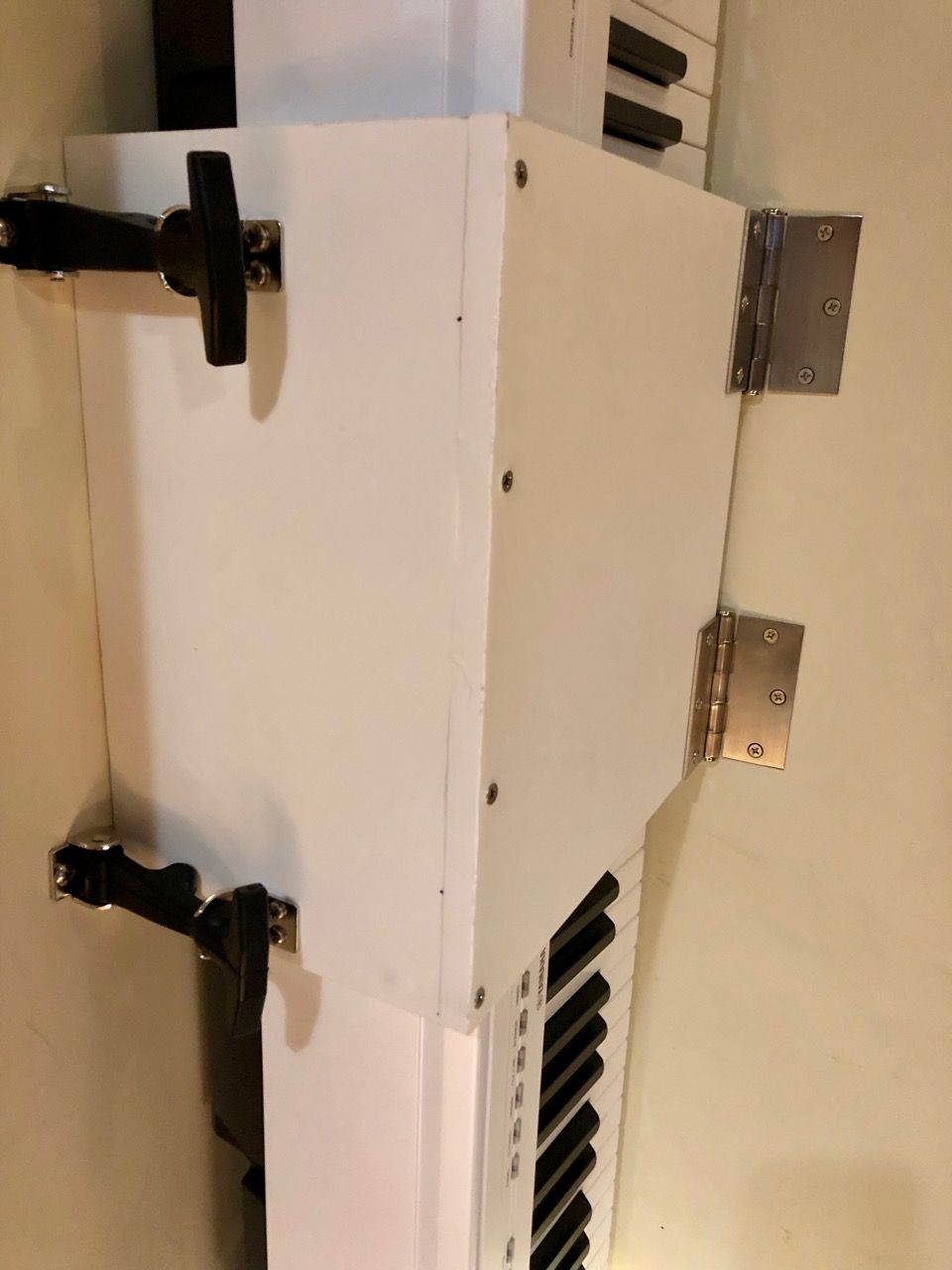I’ve played the piano since I was 3 years old, and love playing whenever I can. On my smaller boats, I had portable keyboards and other smaller things, but on Rendezvous I spent the time to get a full 88-key portable piano and a place to store it.

I have had many pianos and keyboards throughout my life, but I prefer one with a reasonably piano-like keybed and action, along with realistic piano sounds. The keys and action are usually hard to get right, especially in the cheaper models. My all time favorite is my Nord Piano 3 which is an absolutely amazing instrument. However, at over $3000 and 40 pounds, I didn’t think it was the best instrument for the boat.
I have had a lot of smaller keyboards on my sailboats, but their actions were terrible, and the limited key range really bothered me. Many of them required an iPad or computer to generate the sound, or some sort of amplified speaker system. I was looking for something simpler, easier to move around, better keys, and good sound.
About a year ago, I stumbled onto the Yamaha P-125 which looked like a good solution. At only 26 pounds, it was meant to be portable, and billed as such in their advertising. It had a full 88 keys with a Graded Hammer Standard (GHS) keyboard action, on board Yamaha piano sounds, and built in speakers.

Now, I am a bit of an audiophile, so I immediately assumed the speakers would not meet my standards, but I have been pleasantly surprised. There are two mid/high speakers on each corner, and a lower frequency speaker underneath the piano. Those three combined make for a surprisingly realistic sound production from built in speakers. They aren’t as good as a full studio monitor setup with a subwoofer, but they do just fine on the boat.
I added a higher quality sustain pedal, and have piped the outputs into my on-board speakers/stereo/amplifier instead of using the built-in speakers when better sound and control are required. The piano runs off of a 12V DC wall wart, and has plenty of ins/outs/MIDI/headphone jacks.
Overall, the action and keybed are really quite amazing for a ~$600 piano that only weighs 26 pounds. I grew up playing a Yamaha C7 and the action feels very familiar. The four piano samples available are pretty diverse, and actually sound pretty close to real Yamaha pianos.
I have been using the really nice height adjustable glass table in my salon to play on when the mood strikes me. The table can be adjusted to the perfect height when I want to play, and the piano fits on it with about 1/2″ to spare, the newly re-upholstered couch makes for a perfect piano bench, and the speakers are just right above my head in stereo when I use the big speakers. So we have the space to play, the instrument to play, and plenty of seating for others.

The other challenge was storing the piano when not in use. I had been stuffing it into a closet in my master stateroom inside a big bulky fabric case, but it wasn’t that secure, and eventually would fall out and cause some damage. I had been envisioning a bracket system to hold it in the corner, and finally had the time to put things together.

I chose to use 1/2″ Star Board to make a wide band that would go around the middle of the piano while it stood up in the corner of the closet, and kept it stable there. I put a couple of door hinges on the back edge where it would hinge out away from the piano.

Here’s the long piece of Star Board connected to the back wall forming the beginning piece of the band.

I cut down the long piece, and also measured and cut an additional piece to form the other part of the band. I used 3″ long screws to make the 90 degree joint, and will add an angle bracket if I need more support here later. I have to mention, that I am not known for my finish work, and in fact, am pretty terrible at anything woodworking or finish related. I work mostly in Star Board, and my markings and edges tend to be pretty rough. Eventually I will come back and clean this up a bit, but don’t judge!

To attach the shorter portion to the wall and keep the piano secure, I planned on using draw latches. I found a really awesome one from Southco that was the perfect length and could be oriented at 90 degrees at one end, which I needed for my design. I bought two of them to ensure I had a nice secure setup.

During all of this, each time I added another piece, I put the piano in, measured everything, and then also test fit things very close and snug. Measuring is great, but I wanted this to fit very custom, and I’ve found using the real thing at every step is critical to ensuring things fit well.
The draw latch fit perfectly, and worked exactly as I wanted. It provided a nice amount of tension and kept the whole thing very tight.

The piano fits very nicely in the band, and sits very securely. There is very little room for it to move, and no way for it to slide out.

I did leave a small amount of room around the whole band, and am adding a 1/8″ layer of neoprene everywhere it touches the piano to provide chafe and vibration protection.
I’m extremely happy that I found a light, quality piano with excellent sounds and great key action to play on the boat. And now, with my simple band setup, I have a secure place to store it when underway, out of the way in a closet, and ready for the next concert night!

